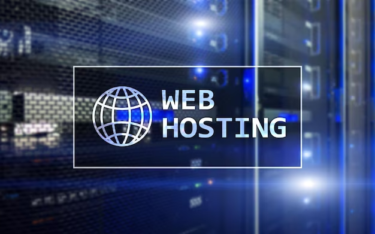In today’s digital age, webmail has become an indispensable tool for communication and collaboration. Among the plethora of webmail services available, eServer Webmail stands out as a reliable and efficient platform. If you’re wondering what eServer Webmail is and how to access it, this comprehensive guide will provide you with all the answers you need. Whether you’re a beginner or an experienced user, you’ll find valuable information and tips to make the most of this powerful email platform.
What is eServer Webmail?
eServer Webmail is an email service provided by eServer, a trusted name in web hosting and email solutions. It offers users a convenient way to send, receive, and manage their emails through a web-based interface. This means you can access your emails from anywhere with an internet connection, making it an ideal solution for both personal and professional use.
Before we dive into how to access eServer Webmail, let’s explore some of its key features that make it a top choice for email communication:
- User-Friendly Interface: eServer Webmail boasts an intuitive and user-friendly interface, making it easy for users of all levels to navigate and manage their emails;
- Spam Filtering: It comes equipped with robust spam filtering tools that help keep your inbox clutter-free by automatically detecting and filtering out unwanted emails;
- Organizational Tools: eServer Webmail offers a range of organizational tools, including folders, labels, and filters, to help you categorize and manage your emails effectively;
- Calendar Integration: Seamlessly integrate your email with a calendar feature to schedule and manage events, appointments, and tasks in one place;
- Attachment Handling: Send and receive attachments effortlessly, with support for various file types, ensuring smooth file sharing with your contacts;
- Mobile-Friendly: Access your emails on the go with eServer Webmail’s mobile-friendly design, compatible with smartphones and tablets.
Now that you have a brief overview of eServer Webmail’s features, let’s move on to how you can access it.
Accessing eServer Webmail
To access eServer Webmail, you will need an internet connection and your login credentials provided by eServer. Follow these steps to get started:
Step 1: Open Your Web Browser
Before you can access eServer Webmail, ensure that you have a functioning internet connection. Once that’s confirmed, open your preferred web browser. Commonly used web browsers include Google Chrome, Mozilla Firefox, and Microsoft Edge. You can use any of these browsers to access your eServer Webmail account.
Step 2: Visit the eServer Webmail URL
In your web browser’s address bar, type the eServer Webmail URL provided by eServer. The URL format is typically in the following structure: “webmail.yourdomain.com.” However, the specific URL may vary depending on your email setup and the domain you are using. Ensure that you enter the correct URL to access the eServer Webmail login page.
Step 3: Login to Your Account
After entering the correct URL, you will be redirected to the eServer Webmail login page. To proceed, you need to provide your login credentials, which consist of your email address and password. Here’s how to do it:
- Email Address: Enter the email address associated with your eServer Webmail account in the designated field;
- Password: Input the password that corresponds to your email address.
Double-check your entries to ensure accuracy, as incorrect login information will prevent access to your account.
Step 4: Choose Your Webmail Client
eServer offers multiple webmail clients, each with its own set of features and interface. You will be presented with options such as Roundcube, Horde, or SquirrelMail. Take a moment to choose the webmail client that best suits your preferences and requirements. Here’s an overview of the commonly offered clients:
| Webmail Client | Key Features | Ideal For |
|---|---|---|
| Roundcube | User-friendly interface, email composition, folder management, calendar | Users who prefer a modern and intuitive email experience. |
| Horde | Advanced collaboration tools, calendar, address book, task list | Users who need comprehensive organization and collaboration capabilities. |
| SquirrelMail | Lightweight, no-frills, simple and easy to use, focus on basic email functions | Users who prefer a minimalist email interface. |
Step 5: Access Your Inbox
Once you’ve successfully logged in and selected your preferred webmail client, you will be directed to your inbox. Here, you can start managing your emails, including reading, composing, replying to, and organizing them. Familiarize yourself with the interface of your chosen webmail client to make the most of its features and functionalities.
Tips for Maximizing Your eServer Webmail Experience

Now that you know how to access eServer Webmail let’s explore some tips to help you make the most of this email platform:
1. Create Folders and Labels
One of the fundamental steps to streamline your email management is to create folders and labels. This allows you to categorize your emails into specific groups, making it easier to locate and manage them. Here’s how you can do it:
- Folders: Create folders such as “Work,” “Personal,” “Subscriptions,” or any other categories that are relevant to your email content;
- Labels: Use labels to further categorize emails within folders. For instance, within the “Work” folder, you can label emails as “Projects,” “Meetings,” or “Client Correspondence.”
This organization system helps keep your inbox clutter-free and ensures you can quickly find the emails you need.
2. Set Up Filters
Filters are a powerful tool to automatically sort incoming emails based on criteria you define. Follow these steps to set up filters:
- Access Filters: Locate the filter settings in your eServer Webmail account settings;
- Create Rules: Define rules for filtering emails. For instance, you can filter emails from a specific sender, with specific keywords, or based on other criteria;
- Choose Actions: Specify what should happen to the filtered emails. You can move them to specific folders, apply labels, or even forward them to another address.
Filters help you manage large volumes of emails by organizing them without manual intervention.
3. Enable Two-Factor Authentication (2FA)
Protect your eServer Webmail account by enabling Two-Factor Authentication (2FA). 2FA adds an extra layer of security by requiring you to provide a second form of verification in addition to your password. Here’s how to set it up:
- Access Security Settings: Navigate to your account’s security settings;
- Enable 2FA: Follow the instructions to enable 2FA. This typically involves setting up a second authentication method, such as receiving a code on your mobile device.
2FA significantly reduces the risk of unauthorized access to your email account.
4. Regularly Check Spam Folder
Periodically review your spam folder for false positives. Legitimate emails may sometimes end up in the spam folder by mistake. To address this:
- Check Spam Folder: Visit your spam folder and review the emails there;
- Mark as “Not Spam”: If you find legitimate emails, mark them as “Not Spam” to improve the accuracy of the spam filter.
Regularly monitoring your spam folder helps prevent important emails from being missed.
5. Backup Important Emails
To ensure you don’t lose critical emails, consider regular backups. This is especially important for crucial work-related emails or valuable personal correspondence. Here’s how you can do it:
- Manual Backups: Periodically export important emails to a local storage device or cloud storage;
- Automatic Backup Tools: Explore third-party tools or services that offer automatic email backups for added convenience.
Backing up your emails provides an extra layer of security and peace of mind.
6. Explore Collaboration Features
If you’re using eServer Webmail for business purposes, take advantage of its collaboration features. These features can streamline teamwork and communication:
- Shared Calendars: Coordinate schedules and appointments with colleagues by sharing calendars;
- Shared Contacts: Maintain a centralized contact list that can be accessed and updated by team members.
These collaboration tools enhance efficiency and teamwork within your organization.
7. Keep Your Account Secure
Security is paramount in email management. Be vigilant against phishing attempts, and never share your login credentials with anyone. Additionally, consider changing your password regularly to further enhance security.
Conclusion
eServer Webmail is a robust email platform that offers a range of features to meet your email communication needs. With its user-friendly interface, mobile compatibility, and security measures, it’s an excellent choice for individuals and businesses alike. By following the steps outlined in this guide and implementing the provided tips, you can make the most of eServer Webmail’s capabilities and enhance your email management experience. So, go ahead and unlock the power of eServer Webmail for efficient and effective email communication!
FAQs
Yes, eServer Webmail is mobile-friendly and can be accessed on smartphones and tablets using a web browser. You can also configure your email account on mobile email apps for a more seamless experience.
To set up email forwarding, log in to your eServer Webmail account and navigate to the email settings or preferences section. Look for the forwarding options and enter the email address where you want your emails to be forwarded.
Yes, eServer Webmail is designed with security in mind. It employs encryption protocols to protect your email communications. However, it’s essential to follow best practices for email security, such as regularly updating your password and being cautious of phishing emails.
Absolutely! eServer Webmail is suitable for both personal and business use. It offers features like calendar integration, contact management, and collaboration tools, making it a viable choice for businesses of all sizes.
The amount of storage space provided by eServer Webmail may vary depending on your subscription plan. Be sure to check your plan’s specifications for storage details. You can also manage your mailbox by deleting old emails or archiving them to free up space.









